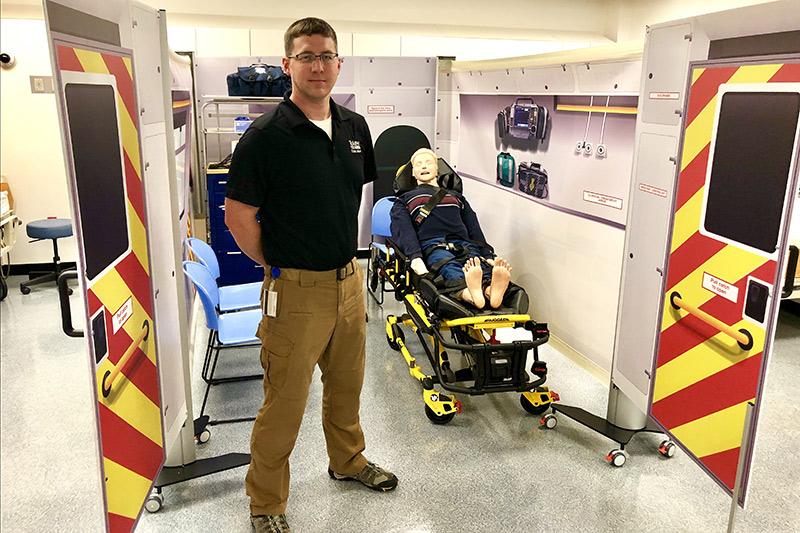School of medicine launches hybrid EMT course
Tulane University School of Medicine is one of the first in the country to launch a new hybrid emergency medical technician training course that allows future paramedics flexible options to complete part of their coursework online.
The course combines online material with at least eight hands-on skills practice and assessment classes at the Tulane Center for Advanced Medical Simulation and Team Training. The in-person training classes are held in the evening, and participants learn skills using lifelike robotic patients in the SIMbulance, a mock ambulance.
"We are the first in the state to run a full hybrid course," said Jared Kimball, Tulane Sim Center course director and trauma educator. "Moving the course partially online expands access to the program for those who work full time or whose schedules don't allow attendance for standard courses on campus."
"These EMTs are often the first healthcare professionals to help patients who end up arriving at either the Tulane or University Medical Center emergency rooms. Essentially, we're training the first step of our hospitals' trauma life-support pipeline."
Jennifer Calzada, Sim Center director
The new course, which initially launched with 16 students, is in high demand.
"It filled up more than three weeks before the start of the course," Kimball said.
A typical EMT class requires about 125 hours of class time and skills training spread out over 30 evenings. In the hybrid course, the traditional class instruction will be through an online learning management system.
"There will be pre-recorded lectures, videos, an e-book textbook with three to four assigned chapters per week, weekly quizzes and the same exams throughout the summer semester," said Jennifer Calzada, Sim Center director.
Students learn to assess patients' injuries, administer CPR, stop bleeding and use other lifesaving techniques in class. Like a typical EMT class, students must also complete stints in an ambulance with actual emergency crews as they work in the city. However, the ride-alongs are coordinated around their work schedules.
Most of the students taking the new class have jobs in emergency response and want to advance their careers, Kimball said.
"While two-thirds of the students in the classroom-version course are Tulane undergraduates who are biomedical engineering and pre-med majors, the hybrid course has learners [who are] all from the community," Calzada said. "These EMTs are often the first healthcare professionals to help patients who end up arriving at either the Tulane or University Medical Center emergency rooms. Essentially, we're training the first step of our hospitals' trauma life-support pipeline."

